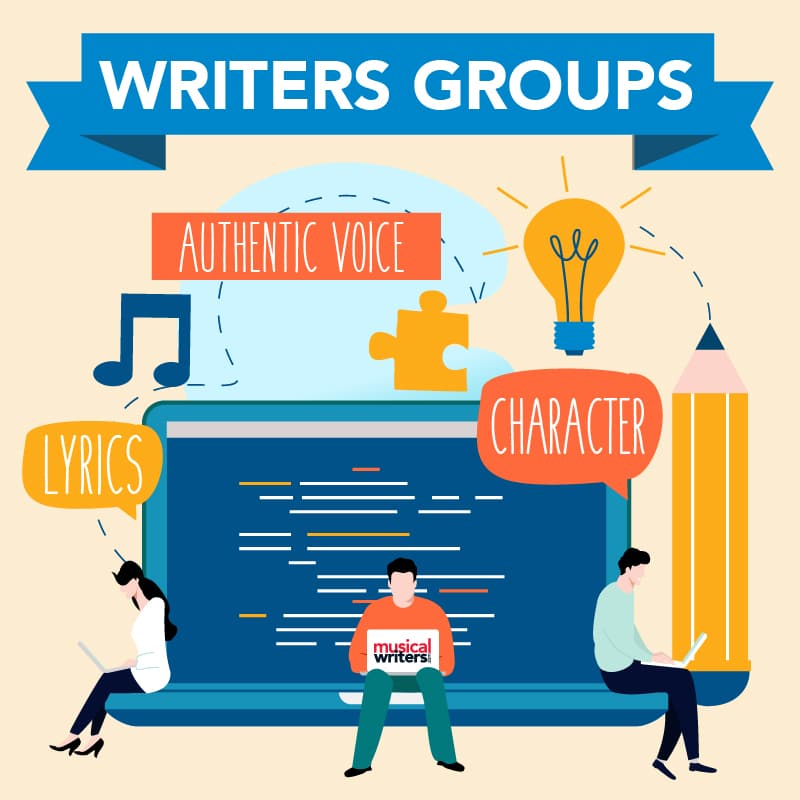The Importance of Story Structure
While there are no set rules for creating musicals, having a road map to follow can be very beneficial to create a story that is meaningful, entertaining and satisfying to audiences. These 7 Plot Points are often used in creating narrative structure for novels, films and musicals. Your libretto (script plus lyrics) may not follow this form exactly, but it is a good exercise to go through to define important moments in your story.
The following is inspired by my friend Steve Cuden’s book, Beating Broadway: How to Create Stories for Musicals That Get Standing Ovations. I highly recommend it!
1. The Normal World (Opening Image)
Wherever your story starts, your opening has to define the world in which we will live for the next two hours. Whether it is a fantastical journey or a glimpse into real life, the rules of the world must be established early on——and you must not break them later. This is also where the main players in your story are typically introduced. This “normal” world isn’t necessarily “normal” by our standards, but it is the everyday in which your protagonist lives.
- Is the time and place clearly defined?
- Who is the story about? How does he/she operate in this world? What is his/her goal? What is his/her flaw?
- What is the tone/style of the show?
I think of defining the parameters of the normal world as creating the story’s ‘sandbox.’ Once you establish where the outer edges of the sandbox are located, you have free rein to play within those boundaries pretty much as you wish.
2. The Inciting Incident (Catalyst)
The world of the protagonist is rocking along, but there must be a catalyst that brings this normalcy to a halt. This event forces the protagonist down a new road in some sort of life-altering way, either by an external or internal force. This moment will give him a clearly defined goal. It may be a heightened version of his original want (in #1) or a completely new goal.
In most cases, this moment will powerfully alter the protagonist’s perspective. In all likelihood, the inciting incident will give him both a new goal as well as the drive to achieve it.
The inciting incident is the original spark that lights his fire! It often also ushers in a myriad of opportunities for conflict that the protagonist must face to achieve the goal.
- What happens to your protagonist to interrupt his normal world?
- How does this change or establish his/her goal?
- What opportunities for conflict does this new goal create?

3. The Point of No Return
Your protagonist is pumped! With a clear goal and the drive to achieve it, this is the point where the protagonist crosses the threshold and takes the reigns for his/her life. It’s a choice to leave the old life behind and is marked by excitement, high hopes, and a conscious choice to move forward. After this step, the future is inevitable. There is no going back to the previous normal world. This choice also ushers in even greater opposition by the antagonist and larger obstacles to overcome.
This should be an exciting step into a new journey, be it emotional or physical—ideally both.
- What choice does your protagonist make to set out on a new road? (Your protagonist decides to ________).
- What is the uncharted territory he/she is now exploring?
- What intense conflict is the result of this choice?
4a. The Midpoint Begins/Intermission
While The Point of No Return can take all of 10 seconds—it’s basically a choice—the Midpoint is the lengthy section where your protagonist begins to jump the hurdles necessary to achieve his new superobjective. At the start of this section is where we typically find a musical’s intermission.
There is a special place where the midpoint of the majority of musical stories occurs. And it comes complete with a mini-climax and a chance to button up a part of the story in a way that, if done well, will drive the audience’s desire for much more.
The protagonist has moved from simply being reactive to new obstacles to now being proactive and taking control of his destiny. His more aggressive outlook increases the volatility of the outcome and leaves the audience wondering how everything is going to work out. There is no certainty here except the reality that life will never be the same.
- What is the destiny that the protagonist can now see clearly?
- Have you set up a strong enough hook that the audience will be excited to return after intermission?
4b. The Midpoint Continues
After intermission, the audience must be able to drop back into the story’s progress without feeling disoriented. That doesn’t mean you have to pick up exactly where you left off. Hours, days or years may have passed. But they should be able to conclude quickly what has transpired during the break. The conflict will continue to rise, and while the Protagonist is still fighting for his want, he/she may be growing somewhat weary. There may be a significant loss here, and he/she must continue to dig deep within to move forward.
- What has changed during Intermission?
- What obstacle (physically or psychologically) has begun to overwhelm your protagonist?
- What has made the Protagonist’s goal now seem like a long shot?

5. The Big Gloom
This is where destiny begins to fall apart. Everything that could go wrong has gone wrong. The worst possible situations are happening to your characters and it looks like things are never going to be better again.
This is one of the most powerful moments in the show. It appears that your Protagonist is going to fail. There must be no doubt about this. He can’t possibly go on. He is going to crash and burn. Defeat is all but certain.
This section can vary in length. It can be as short as a single line of dialogue or lyric from a song, or it can fill a scene. But the audience should understand that the Protagonist has decided there’s no way he’s going to win.
- Your Protagonist indicates he thinks he will fail by ____________________________.
6. Climax into Resolution (Final Challenge)
After diving into the depths of despair, there is suddenly a moment of inspiration or self-realization in which the Protagonist discovers a way to succeed after all. It may well lead him into the greatest battle he’s faced yet, but his newfound fortitude drives him to sacrifice whatever necessary to reach his goal. The climax becomes the most exciting part of the show—emotional and dramatic in every way possible—and becomes the final, greatest challenge for the hero to overcome. There is often the opportunity for the Protagonist to overcome his flaw during this final battle.
Stories in which the protagonist realizes that his flaw has held him back, and then overcomes that flaw, or uses it, to conquer his final obstacle, almost always wind up being remarkably satisfying to audiences.
- What is your Protagonist’s inspiration to continue after the Big Gloom?
- What is the final battle your protagonist has to fight?
- How does the hero earn the resolution of his goal?
- What flaw does the Protagonist overcome to win the final battle?
7. New Normal (Closing Image)
This is the warm fuzzy, or at least results in a feeling of catharsis for the audience. The hero has reached the resolution of his goal. Not necessarily the accomplishment of it. But he has learned something regardless of the outcome.
The hero does not have to achieve his goal in order to learn a lesson. Frequently, a character gets what he needs, not what he wants. Actually, it’s usually more satisfying when a protagonist has a strong want, goes after it, but winds up with what he really needs.
The New Normal could quite possibly be (and often is) a direct return to the location or circumstance the Protagonist started in, only this time with a new perspective.
- What has your Protagonist learned?
- What is the time and place of the New Normal?
- How has your audiences perspective changed (this relates more to theme)?
All quotes are from ‘Beating Broadway: How to Create Stories for Musicals That Get Standing Ovations,’ by Steve Cuden.
Your turn: Examine Your Story! 
Getting these story elements down before sending your script out for a review will put you ahead of the game! I guarantee a dramaturg or script doctor is going to mention them. Get the bones of the story laid out correctly, and the fleshing out of the details will be much easier and make much more sense.
Want worksheet versions of articles like this? Find downloadable checklists, templates and guides here.




















This was a very reassuring read. It gives me confidence that my story line is well conceived and that I have strong work in progress. Thanks.